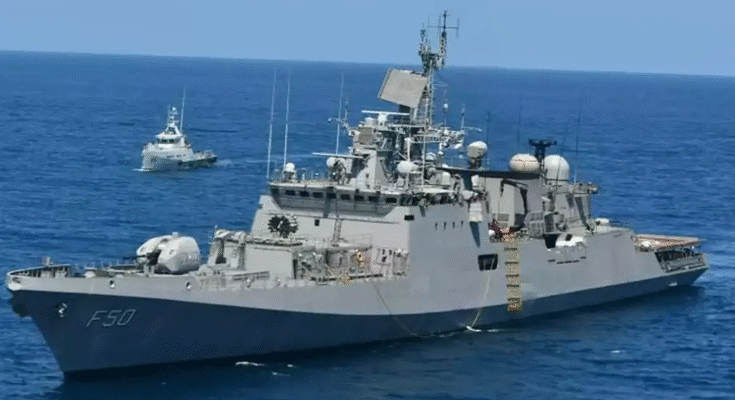JNS: China’s missile and satellite tracking vessel Yuan Wang-5 has re-entered the Indian Ocean Region (IOR), once again drawing close surveillance by the Indian Navy. The deployment comes just days before India’s scheduled missile test in the Bay of Bengal, heightening concerns over Beijing’s expanding maritime surveillance network in the Indo-Pacific.
Satellite images confirming the ship’s presence were shared on social media by Damien Symon, a geo-intelligence and OSINT expert with The Intel Lab.
Yuan Wang 5, one of #China‘s missile & satellite tracking vessels has entered the #IndianOcean region pic.twitter.com/t3KAF43w3g
— Damien Symon (@detresfa_) September 18, 2025
China Yuan Wang-5: A Dual-Use Vessel
Built in 2007, Yuan Wang-5 is officially described as a research and survey ship, but defence experts call it a dual-use platform. Operated by China’s Strategic Support Force (SSF)—the PLA’s branch for space, cyber and electronic warfare—the vessel is fitted with sophisticated radar, meteorological instruments and computing systems capable of monitoring missile trajectories, satellite launches and space missions over vast ranges.
The ship previously stirred controversy when it docked at Sri Lanka’s Hambantota Port in 2022. The port, leased to Beijing under Colombo’s debt repayment deal, symbolises China’s growing presence in South Asia and India’s mounting security concerns.
India’s Concerns
Indian agencies have observed that Chinese tracking ships often enter the IOR around the time of missile trials or naval drills. New Delhi has already issued a notification for a missile test on September 24–25, coinciding with Yuan Wang-5’s arrival.
Officials fear the vessel’s ability to map the ocean floor could give China a strategic edge in anti-submarine warfare (ASW), a sensitive area for India’s maritime deterrence.
The Indo-Pacific Dimension
Yuan Wang-5’s deployment reflects broader power competition in the Indo-Pacific:
-
China’s Expanding Reach: Beijing has steadily widened its presence in the IOR through port access, long-range survey ships and infrastructure—from Gwadar in Pakistan to Djibouti in East Africa.
-
India’s Response: New Delhi has increased naval patrols, deepened ties with island states like Maldives and Seychelles, and bolstered cooperation in the Quad alongside the US, Japan and Australia.
-
Regional Diplomacy: Sri Lanka’s repeated clearance of Chinese vessel dockings highlights its delicate balancing act between Chinese financing and Indian sensitivities.
-
Global Stakes: For the US and allies, such surveillance missions underline the risks of militarisation and the contest over sea-lane security.
A Repeated Pattern
This is not the first such deployment. In May 2025, Chinese research ship Da Yang Yi Hao entered the Bay of Bengal via the Malacca Strait, also flagged for monitoring Indian missile activity. Analysts say such patterns reveal Beijing’s systematic intelligence-gathering strategy in the IOR.
Outlook
With advanced tracking technology and deliberate timing, Yuan Wang-5’s presence once again spotlights the strategic rivalry playing out in the Indian Ocean. For India, the task remains to safeguard sensitive military operations while asserting its role as the region’s net security provider.
As great-power competition intensifies in the Indo-Pacific, the return of Chinese surveillance ships at crucial junctures signals that the contest for dominance is far from over.




